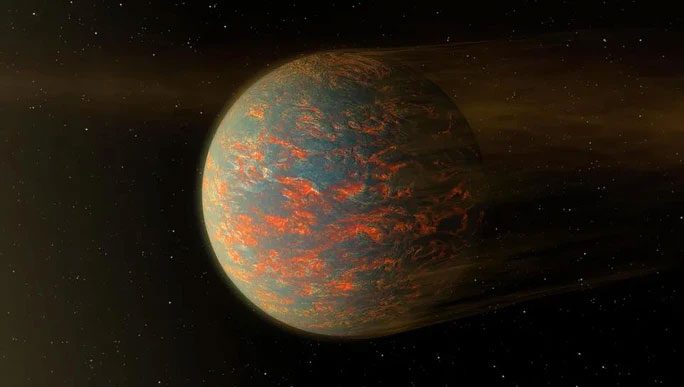The world’s most powerful space telescope, the James Webb Space Telescope, is expected to provide answers to the mysterious signals from 55 Cancri e, a large rocky planet with a severely scorched atmosphere.
According to Live Science, 55 Cancri e is classified as a “super-Earth”, with a mass eight times that of Earth and located 40 light-years away.
Since its discovery in 2004, this mysterious rocky world has continuously emitted strange signals, indicating that something incomprehensible is constantly changing there.

Planet 55 Cancri e – (Photo: NASA/JPL-Caltech).
There are many perplexing aspects surrounding the signals emitted by 55 Cancri e. It is a “two-faced” planet, meaning it is tidally locked to its parent star, similar to how Earth’s only natural satellite, the Moon, is locked in orbit with our planet.
This phenomenon occurs when two celestial bodies are close enough that gravitational interactions cause the smaller body to show only one face to the larger body. 55 Cancri e behaves in the same way; it only shows one face to its parent star, 55 Cancri. Therefore, observations of it should also be more stable.
Additionally, 55 Cancri e has terrifying temperatures: around 2,427 degrees Celsius on its “perpetual day” side and 1,127 degrees Celsius on the night side. Thus, it seems outrageous to think that the strange signals could originate from extraterrestrial life.
A new study by authors from Ludwig Maximilian University (Germany), the University of Bern (Switzerland), and the University of Warwick (UK) took advantage of the rare moment when 55 Cancri e passed through the space between its parent star and our planet, creating a small “eclipse.”
The results published in the Astrophysical Journal show that the puzzling signals observed over the years are actually due to the planet’s hellish atmosphere continuously forming and dissipating.
Volcanoes on this scorching world periodically erupt hot gases, creating a temporary atmosphere. However, that atmosphere quickly burns away, leaving the planet a barren rock once again. This is what generates the varying signals observed by Spitzer, NASA’s infrared telescope.
According to the authors, this new argument can be specifically verified by the newly launched James Webb Space Telescope from NASA and its partners.


















































